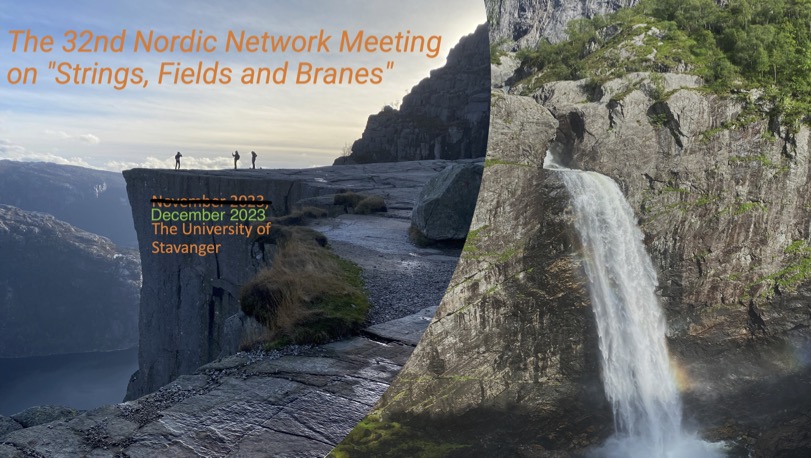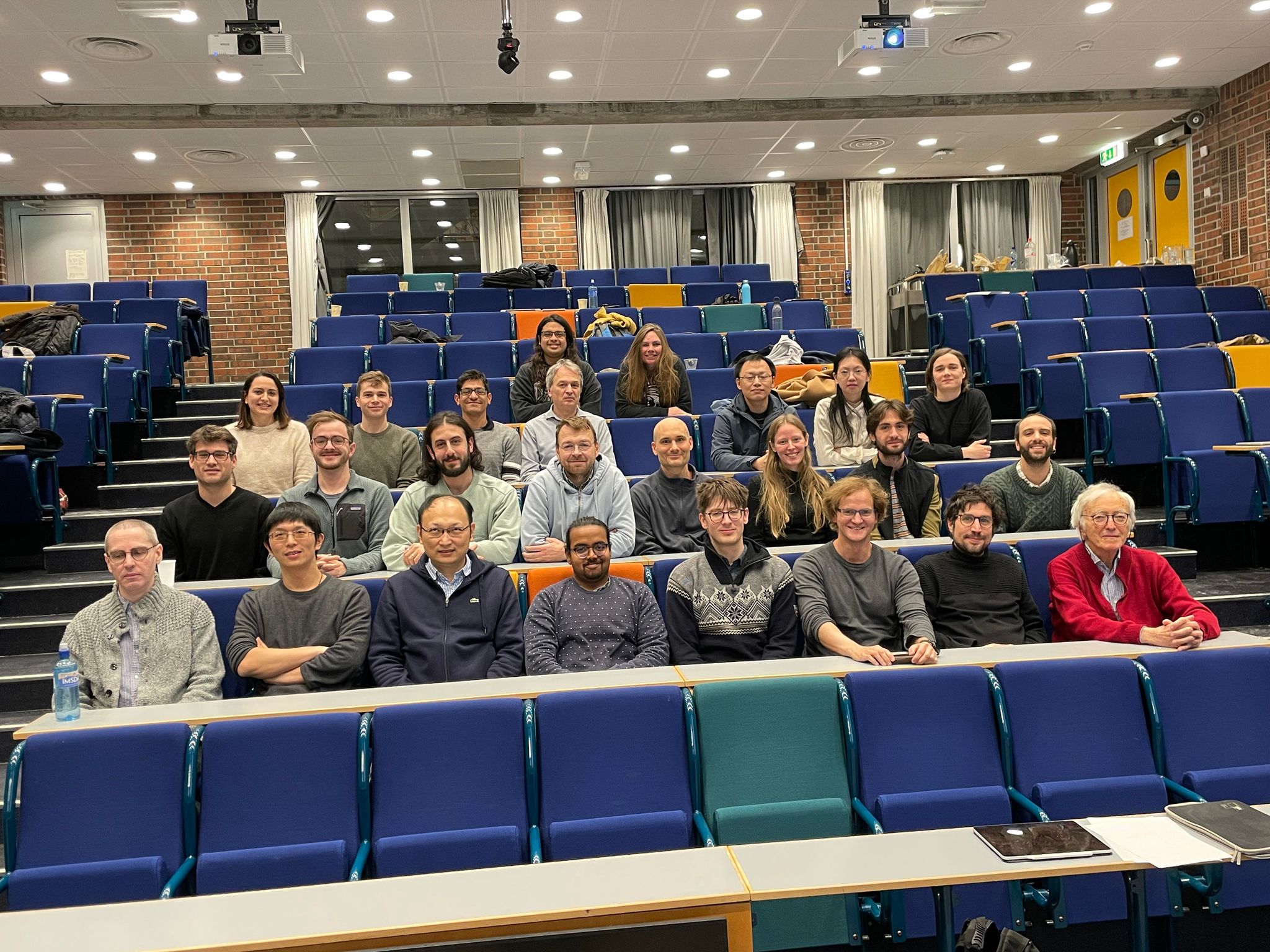32nd Nordic Network Meeting on "Strings, Fields and Branes"
E-102
Kjølv Egelands hus
The 32nd Nordic Network Meeting on "Strings, Fields and Branes" is organised by the Department of Mathematics and Physics at the University of Stavanger, and will be held 4-6th of December 2023.

For the first time in Stavanger, this series of meetings is intended to provide opportunities for PhD students and researchers in String Theory and related topics working within the Nordic community to interact and exchange ideas. It also aims to put students and young researchers in contact with the forefront of current research in the field, through a series of pedagogical lectures by leading experts on topics of significant recent interest. The previous meeting in this series took place at the Niels Bohr Institute in Copenhagen November 2022.

Scientific Programme
The venue for the meeting is E-102 in the Kjølv Egelands hus. Follow this link for directions from the on-campus Hotel Ydalir.
As in previous meetings, the programme includes short talks, primarily by younger researchers, as well as lectures by invited speakers:
Extended geometry and Lie superalgebras
Jakob Palmkvist
University of Örebro
Quantum corrections from quotient geometry
Victoria L. Martin
University of North Florida
Topological Defects and Symmetries
Michele del Zotto
Uppsala University
Reception, Lunch and Dinner
We will have a reception on the Monday evening of the event, just after the talks. It will be at the Institute of Mathematics and Physics on the 5th floor in the same building as the event. There will be nibbles and drinks at the reception, but participants are encouraged to go for dinner afterwards. See the "Dining at the University and in Stavanger" link to the left for restaurant suggestions.
A light lunch will be provided for the participants on the Tuesday of the event, at the main canteen on campus, Kafé Optimisten. We have ordered some bowls with a selection of different tastes and ingredients, including vegitarian options, served with bread and butter.
A dinner will be organised on the Tuesday evening at 19:00. The dinner is not covered and will be in the 30-60 Euro range. We have reserved tables at the restaurant Phileas Fogg, at Skagen 27 in the center of town. They have a selection of Norwegian and international dishes, and some Vegetarian and Vegan options. There is also an option to order a Christmas dinner. If you would like to join, but have not indicated so yet, please let us know as soon as possible.
Aleksi Kurkela
Alex Nielsen
Alexander Rothkopf
Alexia Nix
Anna-Maria Raukh
David Duncan McNutt
Du Pei
Eirik Eik Svanes
Emil Have
Evangelos Tsolakidis
Francesco Alessio
Germano Nardini
Jakob Palmkvist
Johannes Lahnsteiner
Joseph Minahan
Kaiwen Sun
Kays Haddad
Kelvin Malunga
Konstantin Zarembo
Kunal Gupta
Maxim Zabzine
Michele Del Zotto
Muyang Liu
Nadia Flodgren
Paolo Di Vecchia
Paul de Medeiros
Rahul Poddar
Roman Mauch
Ronnie Rodgers
Sabine Harribey
Sigbjørn Hervik
Tomas Brauner
Tuğçe merve KAYA
Uriel Elinos
Vegard Undheim
Victoria Martin
Vyshnav Mohan
Wei Gu
Zaryab Ahmed
Ziqi Yan
